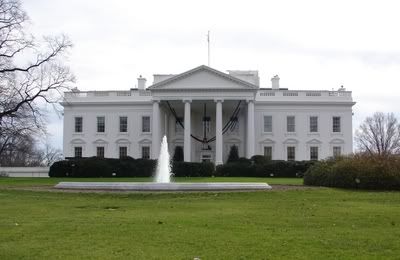Vimeo? WTH?
Well, it is the new video medium the White House is using and has appeared since January 31, 2009 for Obama's Weekly Address.
The first Saturday presidential address on Jan. 24 was made available at the White House as a YouTube file.
But by the next week, on Jan. 31, an administration whose innovative use of YouTube videos had helped propel it into the White House quietly began offering video of President Obama through Vimeo, as well -- and in so doing began a low-key push back at the near-total dominance of Google-owned YouTube in the political video market.
A video-sharing social media site that offers standard and high-definition video options, Vimeo was founded before YouTube, in 2004. But a series of pointed editorial choices has kept the company small while YouTube, founded in 2005, exploded into national consciousness over the next few years. Instead of becoming a cultural byword for online video, Vimeo became a niche favorite among artists and other creative types, particularly in the New York area, where the company is based.
The White House will continue with YouTube, but this shows the White House's capacity to edit, change and embrace on a dime. This includes the use of Vimeo as part of their agenda to inform the public of the Obama Agenda. Another reason that Obama's addresses will continue to stream on YouTube (and will continue to be available) is because of YouTube's closed caption ability for the deaf and hearing impaired. View the YouTube videos from The White House's YouTube page, here.
"Vimeo is not a sea of eyeballs that you must trick into increasing your view count," the company states in its declaration of principles cum user guide. "It is a vibrant community of intelligent and creative people."
It's also one of the online leaders in providing HD video online -- something increasingly valuable as HDTV signals and televisions gain prominence. Now the Obama administration is using Vimeo as one more tool in its efforts to reach supporters, wherever they may be -- and whatever software they may be using to get there.
"President Obama believes we need to open up government to its citizens," explained White House spokesman Nick Shapiro. "The weekly address is just one example of the Obama administration using cutting-edge technologies to create a new level of transparency, accountability, and participation for America's citizens."
I love the above, why? Because the one thing that the Obama Campaign was genius at was reaching folk, especially the youth. My nieces and nephews don't watch cable chatter, they got their information about Obama from The Daily Show and YouTube. They knew all his speeches, where he had been, all the musical and movie artists supporting Obama through YouTube.
This was a medium NO CANDIDATE embraced, but Obama. Other candidates were tepid to embrace YouTube because of the missteps by the likes of George Allen and believed this medium was a "gotcha" medium, when in fact it was a source to get information out to the masses, as Obama demonstrated in its use. This approach worked for the Obama Campaign. Soon my mother was watching Obama on YouTube if she missed a speech. My brothers were at work when Obama made his race speech in Philadelphia, but they sat at home, uploaded the speech from their computer and watched him on their 50 inch, at their leisure.
One thing that has happened from the Obama Campaign is that the old way of campaigning is done. We will still have fundraisers, etc. But the approach to getting to voters has changed, the way to get folk involved in the process has changed and the attitude of new medium has been embraced.
Source
Home Page














